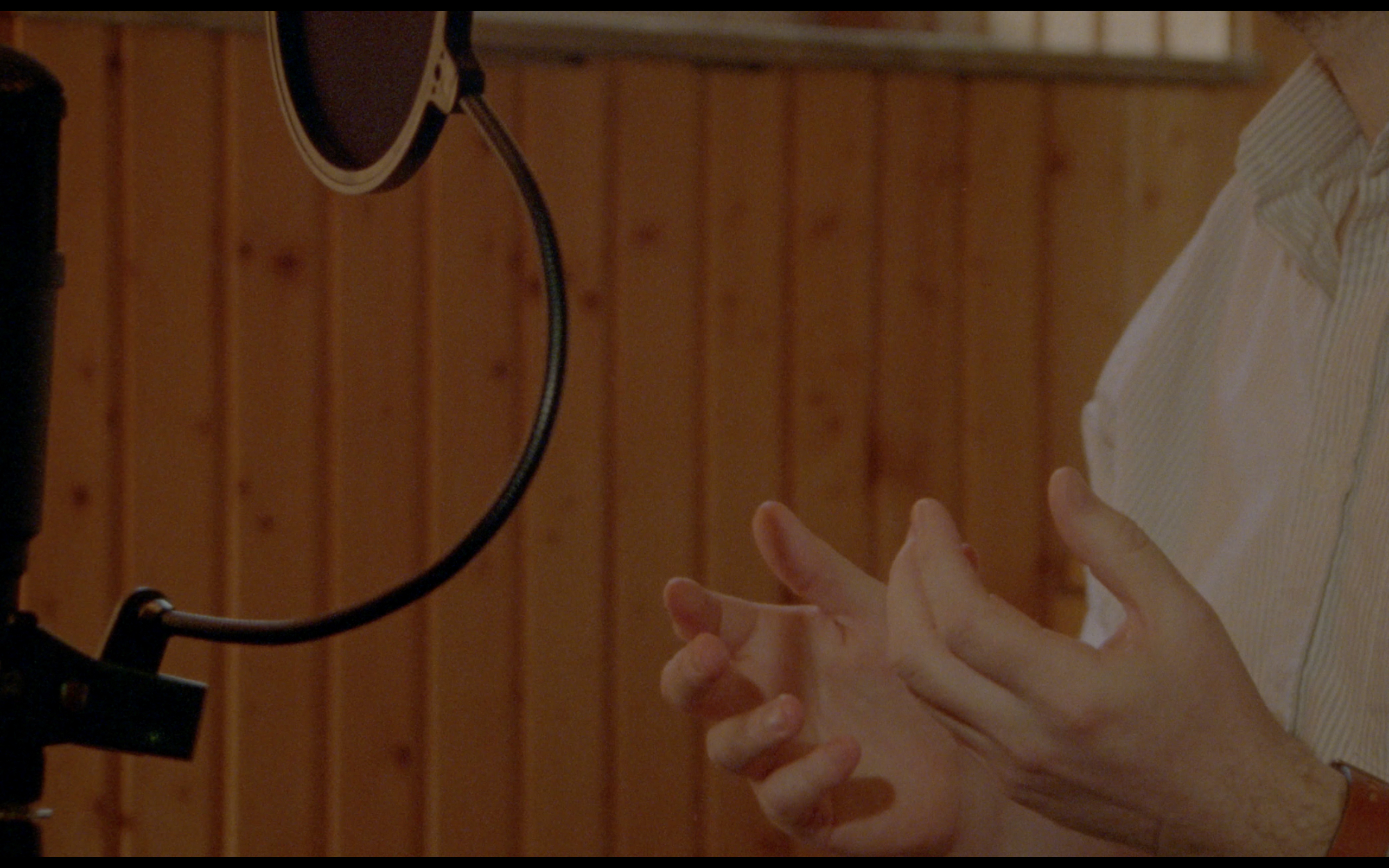Martin Grennberger: Your work utilises a plethora of technical devices, modes of presentation and installational approaches. Many works deal with questions of obsolete technologies and media archaeologies. You work with performance, audio recordings, slide projection, poetry, sound poetry, printed matter, photography, 16mm film and the installation broadly defined. What place does film and the moving image occupy in your practice? I am thinking of it here both as device in its own right but also a means of documentation and documenting other projects of yours.
Tris Vonna-Michell: In fact it has been in recent years that I have spent even more time addressing and trying to overcome media archeological concerns and challenges. Mainly because now it is not only in my own work, but also in my dad´s publishing project Balsam Flex, which he ran from the mid 1970s until the early 1990s, and many of his multimedia works which I am only just discovering. I am still in the initial phase of sorting, assembling and inventorying the various media components that belonged to many of his works, trying to decipher which formats were used and which are still available or transferrable in some way. Even though I’m not sure what direction these conservation efforts will lead me, it feels like the right starting point for producing new works or discovering forgotten or concealed works. Concerning my own work, after performing intensely for over a decade my practice developed more so into film and slide installations, in which documentation strategies served an integral role. That is still the case for how I am currently working, and since photo-chemical photography, film and voice narrations continue to play a big part in my practice there is still this constant integration and re-working of other works, timelines and documentation formats.
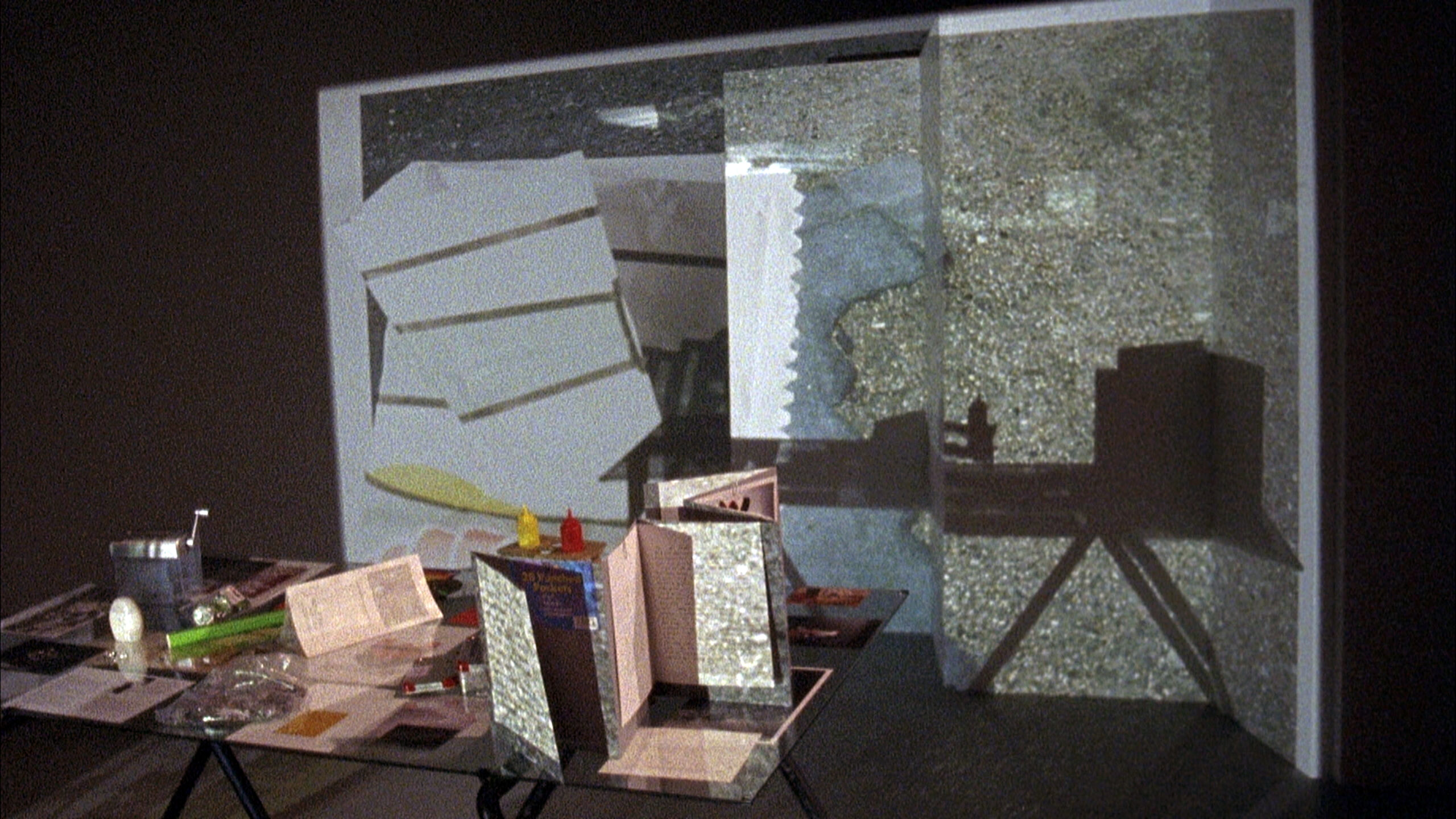
Chopin (Alma Verse), Tris Vonna-Michell 2018
MG: In Chopin (Alma Verse) (2018), the last work in your project Finding Chopin (2005–2018), you once again engage with the legacy and “tracing” of French sound poet, painter, publisher and artist Henri Chopin (1922–2008). This bifurcating project has involved many iterations and formats, and you describe Chopin (Alma Verse) as film installation. What drew you to Chopin’s work in the first place?
TVM: From a personal perspective it wasn’t necessarily the work of Chopin that I first encountered but the family dynamic first and foremost. My parents moved to Essex in the early 1980s and it seems that my dad had been collaborating with Chopin around that time, either in the form of collaborative works or my dad´s Balsam Flex publishing project. In later years when studying art I would return to the recollections of Chopin´s works, relayed by my dad, or the various concrete and sound poetry publications at the family home. In terms of his practice and inspiration I would say his manipulation of voice and its semantic interplay with technology, plus his OU Review imprint, which was incredible!
MG: Could you elaborate on your notion of film installation here, and if and how it differs from film and installation proper?
TVM: Well, regarding the various iterations of Finding Chopin and the film / installation cross-overs – I had been performing and installing Finding Chopin since 2005 and by around 2014 I began to question the longevity of performing live and its activation of installations. Both the performing and staging of shifting installations began to occupy too much mental space, I felt the need to capture such ephemeral tendencies. Hence the move towards film was an attempt to do so, to document certain ways of working, while also enabling them to continue to exist. Returning to your first question and specifically to the role of documentation – the necessity to explore it in more depth and integrate it into my working methodology derives from the fact that all my works contained live performance components. But it was after experiencing the inherent fragilities of Finding Chopin (on levels of materiality and memory) that I really began to work with documentation as material. Not only in terms of the construction and preservation of new and old narratives but also in terms of determining the legal and contextual conditions of my practice.
Prior to developing Finding Chopin into film installations this work was mainly performed as live spoken narrations, and often accompanied by a table installation consisting of photographs, documents, found objects, archival and travel paraphernalia as well as slide projections. So there was always a constant sense of movement and interaction of space (and exhibition architecture). One of the ideas behind the Chopin (Alma Verse) film was to retain this sense, and the slide projection became a metronome to drive the spatialisation of the installation, while the spoken narrations (of my daughter, Alma, and myself) had their own pace and rhythm.
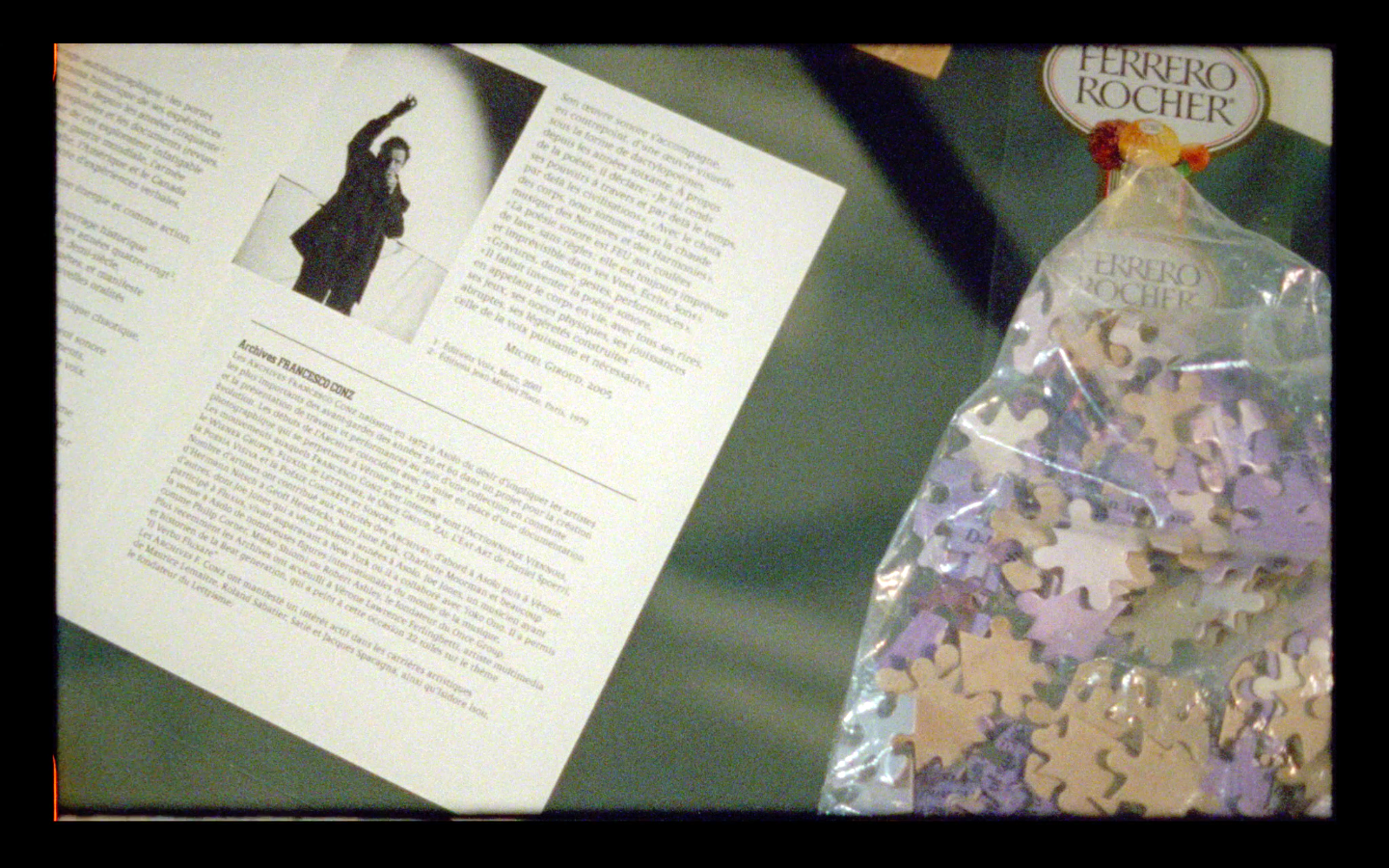
Chopin (Alma Verse), Tris Vonna-Michell 2018
MG: You mentioned your father’s various collaborations with Chopin, and for quite some time now, you’ve been going through and working with his archives. An artist, publisher and filmmaker himself, you use and integrate some of his materials and footage in your own practice. How has this affected, energised and invigorated your own practice, as well as activating questions connected to family history, older media, the nature of reuse, recontextualisation and narration?
TVM: Well, indirectly I have been responding to my dad´s materials since my art school studies, but I didn’t have access to them as such, it was more a drive towards understanding them that became the impetus for many works, in particular, Finding Chopin (2005–2018), hahn/huhn (2003–2016), and Monumental Detours / Insignificant Fixtures (2008–2011). I knew anecdotally about my dad´s publishing project Balsam Flex, and his collaborations with Henri Chopin, but not much more. I guess it was this combination of proximity and unattainability of my dad´s materials that became a key dynamic in my working methods. At the moment I´m cautious to use the word archive concerning the materials that I have started to engage with after my dad´s death. Only recently hundreds of boxes of materials, containing not necessarily works or even complete and clearly defined works, but all kinds of matter, entered my world. The photo series, Boxed Matter (2022), that were recently presented at Jan Mot in Brussels were based on assemblages of these materials. But this is a new phase of engaging directly, in a more tactile manner with his works and materials, attempting to conjure up works and gain an understanding of his past activities.
MG: What, more specifically, have you come across when going through his archives?
TVM: After the 200-odd boxes arrived at my studio it took me over a year to orientate myself through the materials, it was more about opening boxes, tipping them out on a repro stand and capturing the immediate cluster, photographing then re-boxing the materials. I wanted to maintain a fleeting sense of proximity and unattainability, at least for a bit longer. Despite this approach of unboxing and photographing, I was always searching for media capsules which needed further unboxing. For example, amongst a box full of family documents, flyers, menus, manuals, newspapers, photographic negatives, transparencies, sculptural works or debris there was often various media disks, still film canisters, Super-8, 16mm film etc. So there’s been a slow process of selecting various media capsules and trying to find people and places who can unlock and digitise them. This is quite a slow and costly process, but soon this material will be used for a new film work I am currently developing.
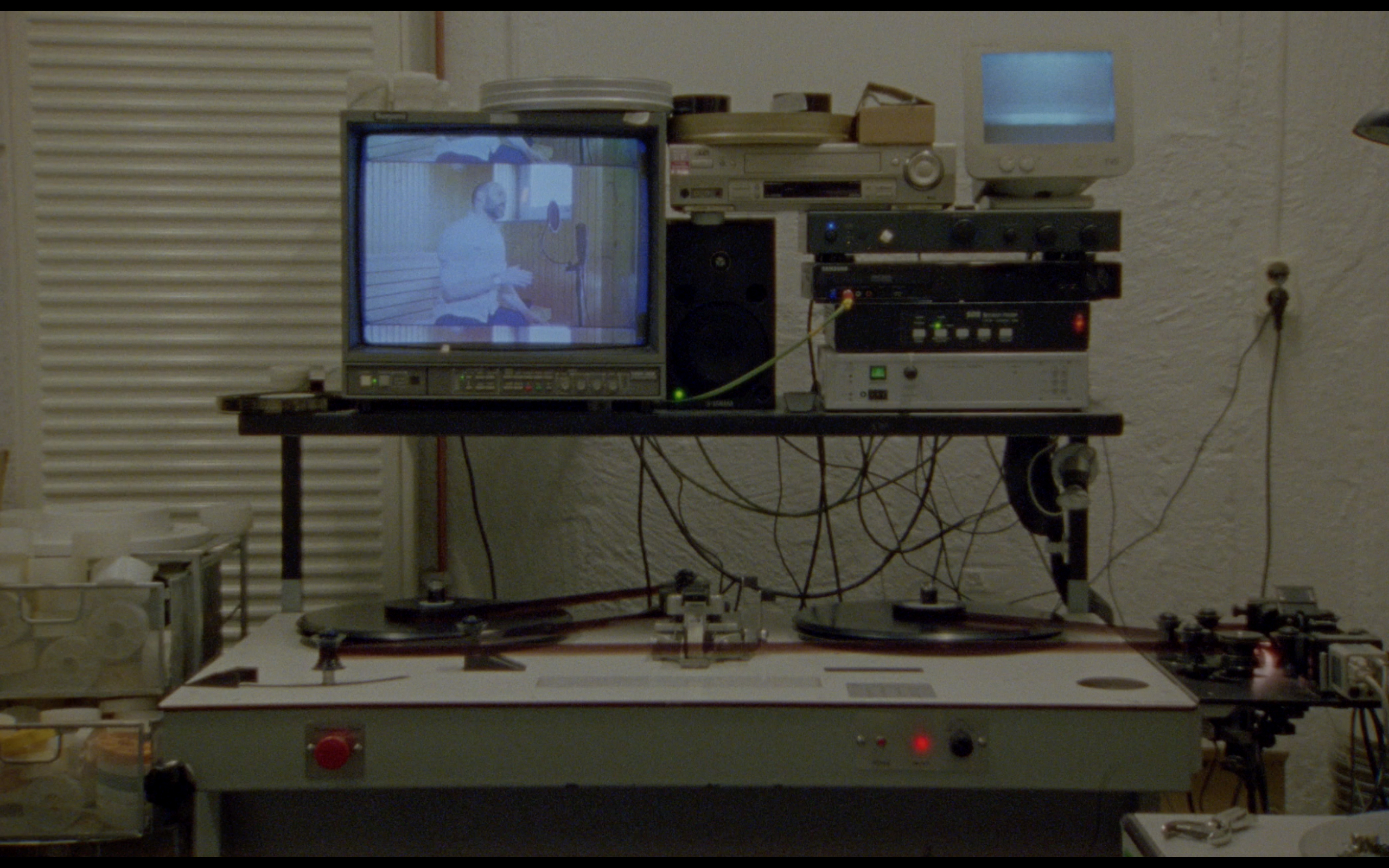
Smoke & Mirrors, Tris Vonna-Michell 2017
MG: Text and the performative act of delivery are prominent in many of your works, as is improvisation, to some extent. In your films, performing a text entails a complex amalgamation of layers: the use of repetition, stream of consciousness, different speeds of delivery, indeterminism, detours, digressions, vocal glissandos and glitches and general multivocal approaches. Smoke & Mirrors (2017–2018) is an interesting case in point. What’s your take on the role of storytelling and performative fabrication here?
TVM: Yes I think your description of my use of text and performance is very accurate, and the doubting of improvisation, I’m still undecided about that aspect. Since my early live spoken narrations I always had a written script or visual score, ones which were loosely written, often handwritten, misplaced, memorised and then misaligned.
So the act of writing was always the starting process for new performances and works. I never performed live with a written script present, but often had a visual sequence of slides or artefacts present while performing (often I wouldn’t see them clearly, their presence was merely metronomic, such as changing slides/lights, ticking egg-timer etc). Also, the anxiety that a public created when performing live was critical in terms of improvising upon such script material, and in recent years I felt it was important to recreate a similar sense of anxiety to propel the performing. That was how for the film Smoke & Mirrors the spoken narration was created. And regarding its pace and rhythm, I performed within the time limits of 800 feet of 16mm film, which was an attempt to accelerate and loosen the parameters of where the narration might go.
Also, when performing in a recording studio or a similar such space, like in a sauna at my studio, I would often perform through numerous handwritten sketches, notes, and photographs. This was my way of working from a score or script but in a more associative and immediate manner, trying to decipher and re-activate such materials under the duress of a recording device. And not quite having the complete and chronological overview in sight, but glimpses and indicators. The fact that I had been performing a handful of works repetitively for so many years meant that this instantaneous duality of deciphering and articulating became more familiar and fluent. This approach was used for all my performances so it meant that narratives pertaining to other works kept entering other works. Eventually I began to accept these narrative incursions and improvise around them, or within them. Just like working with certain photo-chemical technologies, I gradually embraced the lack of control I had over them.
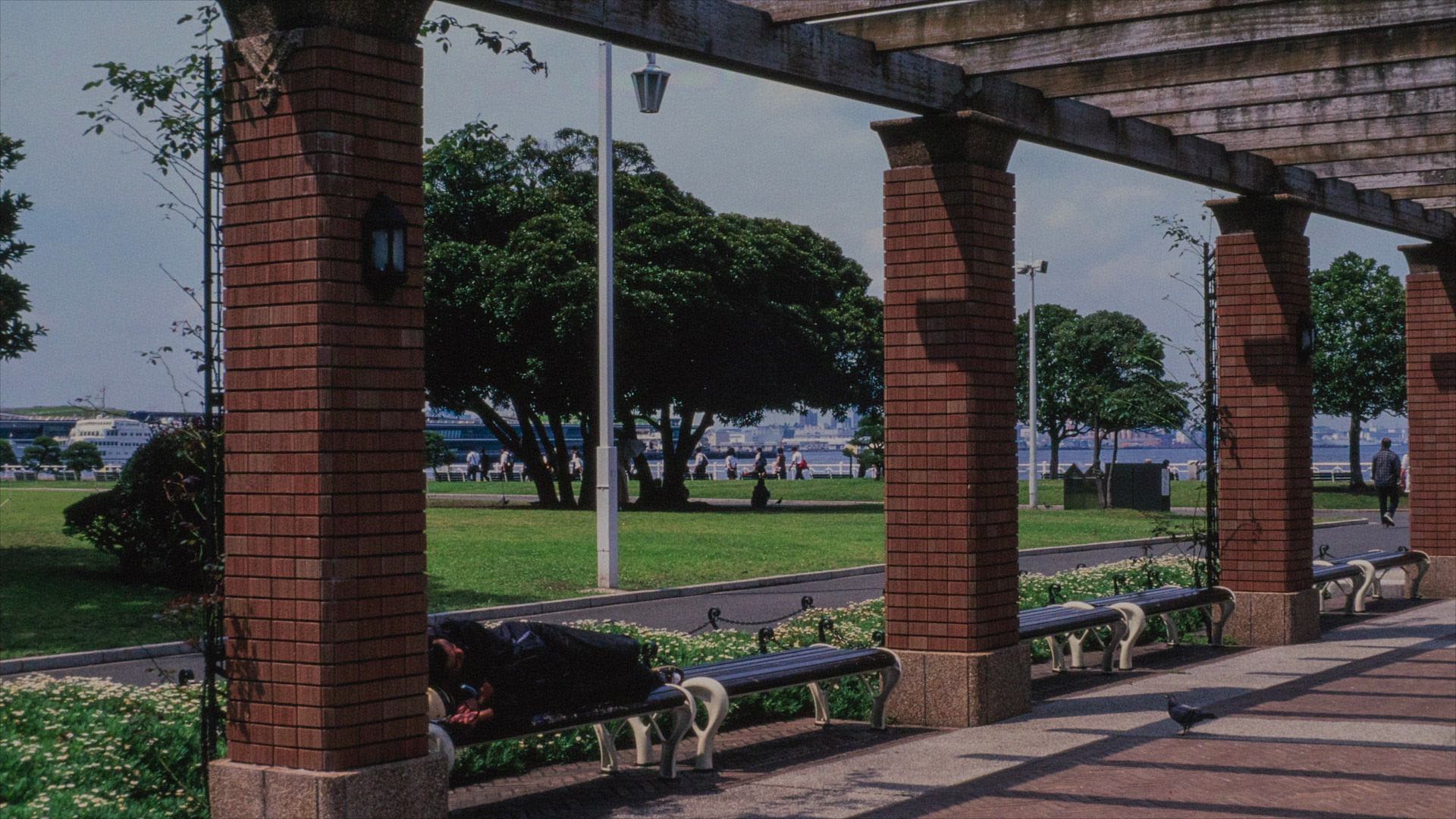
Registers, Tris Vonna-Michell 2017
MG: Registers (2017) has been presented both as an exhibition, full scale installation and a film, again invocating this mediation, re-working, oscillation and fluidity between formats and modes of presentation. The material is based on footage shot during a visit to Japan. What can you say about this piece?
TVM: Registers consisted of an animated sequence of black & white 35mm slides taken during a trip to Japan in 2008. All the slides were taken in transient and consumer spaces like underpasses, viaducts, docks, stations and shopping malls, and re-assembled in an anachronistic narrative. There were three phases to the construction of this film-work; the sequencing of photographed and projected slides was the initial phase, followed by the composing of a soundtrack, which was a montage of musical compositions by artist and musician Jan Matthé together with field-recordings by me. These two phases came together to become Registers, which was the first film-work I had made in which my own voice was absent. A year later the third phase emerged, somewhat unintentionally, whereby I performed spoken narrations, which were recollections on several journeys made throughout Japan in 2001 and 2008, as well as reflections on the pre-existent film Register.
Regarding the black & white 35mm slides, most were photographed on lightbox surfaces and sequenced into a timeline, but many were animated by projecting them through water and filming them. This aquatic element became a filter, whereby the projected slides emerged onto translucent sheets of paper which were dipped and agitated in water.
Registers, as a film-work had many formal iterations over the years, in which the last iteration it was presented a multitrack sound installation. But in earlier iterations it had been screened in a more cinematic setting, installed as a photomontage wallpaper and flatscreen installation, and also as a projected installational set-up within a constellation of other works, often in close proximity (or diffusion) with Smoke & Mirrors.
MG: Considering some of what we have touched upon above – the intricasies of memory, the use of different media, family history – your HD installation Postscript III-V (Berlin) (2016), is illuminating. Here you investigate your own and your family’s stories within the context of the history of Berlin.
TVM: Postscript III-V (Berlin) became the final iteration out of a work that I had been performing, constructing and deconstructing for many years, hahn/huhn (2003-2016). The genesis of hahn/huhn came from a piece of prose I wrote in 2003, Who Is Reinhold Hahn?. As a prose and subsequent work, hahn/huhn was constructed as a composite of fragmentary biographical information, historical markers and monuments beneath and above the city of Berlin, and loosely driven by principles of dérive and psychogeography. In 2005 the work moved more into spoken narration, which gradually enveloped assembled materials and images to accompany it, which enabled over 10 years of unfolding into a constellation of spatial, temporal and technological parameters. These ranged from live performances (to a public vis-à-vis or remotely, via telephone and mail-art), photocopies of images (activated via performance or left as documentation, residues, from performances) to lightbox, slide and film installations. Since 2013 hahn/huhn was presented under various iterations of Postscript (Berlin), as a synchronised slide to spoken narration installation. And returning to your question regarding the film Postscript III-V (Berlin), and an earlier question about the use of documentation within my practice, the above film was again an attempt to capture and layer the last iteration of hahn/huhn. Similar to my relationship to Chopin (Alma Verse), when a work had been so present and actively re-worked (so deliberately detoured and durational) for over a decade it became inevitable that certain documentation incursions were needed. And in that sense, the act of documenting became a circular vice to demarcate, to capture, and bookend so many years of spoken and non-spoken narrations, while also enlivening them beyond my presence.


